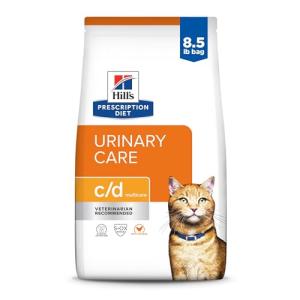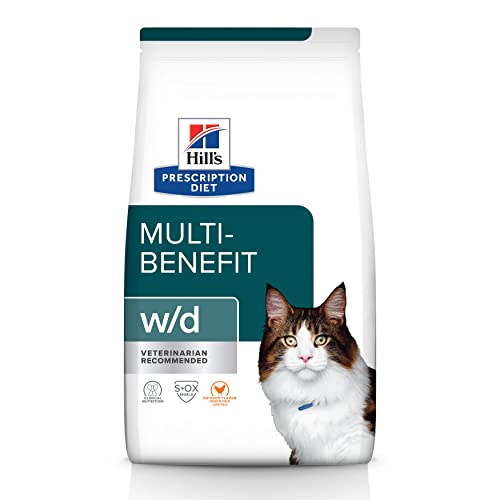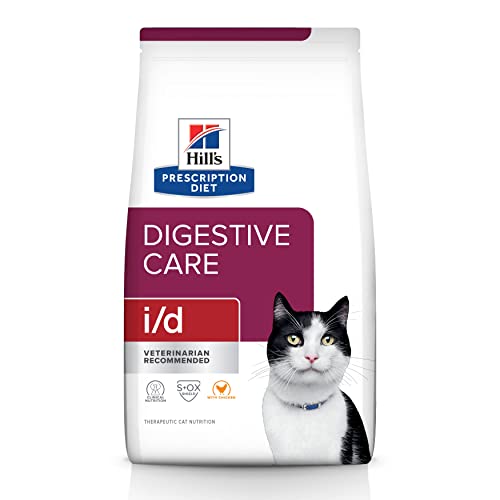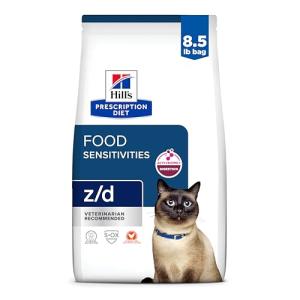A purring cat is a happy cat, and a healthy cat is a happy cat. But achieving feline bliss starts with the food bowl. Your cat deserves the best, and providing a nutritious diet is one of the most important ways you can contribute to their overall well-being and longevity. But with the seemingly endless variety of cat food options lining store shelves – wet, dry, raw, grain-free, high-protein, and more – how do you choose the best one for your furry companion? This article will explore the key features of top-quality cat foods, helping you make informed decisions to ensure your feline friend's health and happiness. We'll examine the essential nutrients cats need, identify ingredients to avoid, discuss different types of food, and provide tips for choosing the best option for your cat's specific needs.
Cats have unique dietary requirements that differ significantly from other domestic animals, like dogs. Understanding these needs is crucial for providing optimal nutrition. As obligate carnivores, cats must obtain certain nutrients from animal sources. Their bodies are specifically adapted to thrive on a diet primarily composed of animal protein and fat.
Protein is the cornerstone of a healthy feline diet. Cats require high levels of animal-based protein to maintain muscle mass, support organ function, and provide energy. Crucially, cats need specific amino acids, like taurine, which are primarily found in animal tissues. Taurine is essential for vision, heart health, and proper digestion. A deficiency in taurine can lead to serious health problems, including blindness and heart disease. Look for cat foods that list specific meat sources – such as chicken, turkey, fish, or lamb – as the primary ingredients. While plant-based proteins may be present, they should not be the main protein source, as cats cannot efficiently utilize them to meet their taurine and other amino acid requirements.
Healthy fats are another essential component of a cat's diet. Fats provide energy, aid in the absorption of fat-soluble vitamins, and contribute to a healthy, shiny coat. Omega-3 and omega-6 fatty acids are particularly important. These essential fatty acids play a role in reducing inflammation, supporting brain function, and maintaining healthy skin. Look for foods that contain sources of these fatty acids, such as fish oil, flaxseed, or chicken fat.
While cats don't require large quantities of vitamins and minerals, they are still vital for overall health. Vitamin A is crucial for vision, immune function, and healthy skin. Vitamin D helps regulate calcium and phosphorus levels, essential for strong bones and teeth. B vitamins play a role in energy metabolism and nerve function. Important minerals include calcium and phosphorus (for bone health), potassium (for nerve and muscle function), and magnesium (for enzyme function). A balanced, high-quality cat food will provide these essential vitamins and minerals in the appropriate proportions. It is much more reliable to use a properly formulated food than to try to supplement on your own.
Hydration is often overlooked, but it is absolutely critical for cats. Cats have a naturally low thirst drive, which can make them prone to dehydration, especially if they primarily eat dry food. Dehydration can contribute to urinary tract problems, kidney disease, and other health issues. Encourage water intake by providing fresh, clean water at all times. Consider using a water fountain, as some cats prefer running water. Wet food has a significantly higher moisture content than dry food and can be a valuable way to increase a cat's water intake.
While cats are obligate carnivores and require a diet high in animal protein, they do need some carbohydrates. Carbohydrates can provide a source of energy, but they should be present in limited quantities. The best sources of carbohydrates for cats are easily digestible options like sweet potatoes or peas. Avoid foods with excessive amounts of grains, such as corn, wheat, and soy, which are often used as fillers and provide little nutritional value for cats. These fillers can contribute to weight gain, digestive issues, and even allergies.
Knowing what cats need is the first step; knowing what to avoid is just as important. Certain ingredients commonly found in lower-quality cat foods can be detrimental to a cat's health. Reading ingredient labels carefully is crucial for making informed choices.
Artificial colors, flavors, and preservatives are unnecessary additives that provide no nutritional benefit and can potentially cause allergic reactions or other health problems in some cats. These synthetic ingredients are often added to enhance the appearance or palatability of the food for the human, not for the cat's benefit.
Excessive fillers, such as corn, soy, and wheat, are common culprits in lower-quality cat foods. These ingredients are inexpensive and are used to bulk up the food, but they are not easily digestible by cats and offer minimal nutritional value. They can contribute to weight gain, digestive upset, and may trigger allergies in sensitive cats. Cats are designed to process animal protein, not large quantities of grains.
The topic of by-products in cat food is often debated. By-products are essentially the parts of an animal that remain after the prime cuts of meat have been removed. This can include organs, bones, and other tissues. While some argue that by-products are a natural part of a cat's diet in the wild (as they would consume the entire prey animal), others are concerned about the quality and consistency of by-product meals. The key concern is unspecified by-products. If the label simply states "meat by-products" or "poultry by-products," it's impossible to know the exact source and quality of the ingredients. Look for foods that list specific by-products, such as "chicken liver" or "beef heart," if you choose to include them in your cat's diet. This indicates a higher level of quality control.
Added sugar is completely unnecessary and detrimental to a cat's health. Cats do not have a sweet tooth and do not need sugar in their diet. Added sugar can contribute to weight gain, dental problems, and even diabetes.
Carrageenan is a thickening agent derived from seaweed that is sometimes added to wet cat food. While it is generally recognized as safe by the FDA, some studies have suggested a potential link between carrageenan and inflammation in the digestive tract. The research is ongoing, but if your cat has a sensitive stomach or inflammatory bowel disease, you may want to choose foods that do not contain carrageenan.
Reading labels carefully is crucial. Now let's look at different types of food. Different types of cat food offer various advantages and disadvantages, and the best choice depends on your cat's individual needs, preferences, and your lifestyle.
Dry food, also known as kibble, is a popular choice due to its convenience, affordability, and longer shelf life. It can also help to promote dental health, as the crunchy texture can help to scrape away plaque and tartar if the kibble is properly formulated. However, dry food has a significantly lower moisture content than wet food, which can be a concern for cats, given their low thirst drive. It's crucial to ensure your cat drinks plenty of water if they primarily eat dry food. Also, some dry foods can be high in carbohydrates and contain lower-quality ingredients, so careful label reading is essential.
Wet food, typically sold in cans or pouches, has a much higher moisture content than dry food, which is beneficial for hydration. Many cats also find wet food more palatable, making it a good option for picky eaters. Wet food often contains higher levels of protein and lower levels of carbohydrates compared to dry food, aligning better with a cat's natural dietary needs. However, wet food can be more expensive than dry food and has a shorter shelf life once opened.
Raw food diets, either commercially prepared or homemade, are becoming increasingly popular. The idea behind raw feeding is to mimic a cat's natural diet in the wild, which would consist primarily of raw meat, bones, and organs. Proponents of raw feeding claim benefits such as improved digestion, increased energy, and a healthier coat. However, raw food diets carry a risk of bacterial contamination, such as Salmonella or E. coli, which can be harmful to both cats and humans. If you choose a raw food diet, it's essential to handle the food safely and to ensure it is nutritionally complete and balanced. Consulting with a veterinarian or a veterinary nutritionist is highly recommended before switching to a raw food diet, especially if you are preparing it yourself. Precise balancing is critical for avoiding long-term health problems.
Semi-moist cat foods are another option, though they tend to be less popular than dry or wet food. They have a moisture content somewhere between dry and wet food and often come in the form of soft, chewy pieces. However, semi-moist foods often contain high levels of sugar, artificial preservatives, and other undesirable ingredients. They are generally not recommended as a primary food source.
In addition to the type of food, it's important to consider your cat's life stage. Kittens, adult cats, and senior cats have different nutritional needs. Kittens require higher levels of protein and calories to support their rapid growth and development. Senior cats may benefit from foods with lower calorie levels to prevent weight gain, and added supplements to support joint health. Many cat food brands offer formulas specifically designed for different life stages.
Ultimately, the best food is one that meets your cat's individual needs and preferences, and that you can consistently provide. There is no single "best" cat food for all cats. Some cats thrive on dry food, while others prefer wet food. Some cats may have allergies or sensitivities that require a specific type of diet.
Transitioning to a new food should be done gradually to avoid digestive upset. A sudden change in diet can cause vomiting, diarrhea, or a loss of appetite. Start by mixing a small amount of the new food with your cat's current food. Gradually increase the proportion of new food and decrease the proportion of old food over a period of 7-10 days. This allows your cat's digestive system to adjust to the new food.
Monitor your cat closely during the transition and throughout their life. Look for positive changes, such as increased energy levels, a healthier coat, improved stool quality, and good body condition. Be alert for any negative changes, such as vomiting, diarrhea, lethargy, changes in appetite, or excessive scratching, which could indicate a food intolerance or allergy.
It's always a good idea to consult with your veterinarian about your cat's diet, especially if your cat has any underlying health conditions or if you are considering a significant change in their food. Your vet can help you choose a food that is appropriate for your cat's age, breed, activity level, and health status. They can also help you interpret ingredient labels and identify any potential concerns.
By making informed choices about your cat's food, you're investing in their long-term health and happiness. Your feline friend will thank you! Don't be overwhelmed by the numerous choices on the market. Start by reading labels carefully, understanding your cat's specific nutritional needs, and don't hesitate to seek guidance from your veterinarian. A healthier, happier cat, with a gleaming coat, bright eyes, and playful energy, is within reach. Armed with this knowledge, you can confidently navigate the world of cat food and provide your beloved companion with the nourishment they deserve, setting them up for a long and joyful life by your side.







